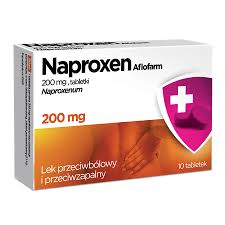WHAT IS OPIOID(Buy Opioidanalgesic online)
Opioids are a class of drugs that are commonly used to manage pain. They work by binding to specific receptors in the brain, spinal cord, and other areas of the body to reduce the perception of pain. Here are some key points about opioids:
Types of Opioids(Buy Opioidanalgesic online)
- Natural Opioids: Derived from the opium poppy plant. Examples include morphine and codeine.
- Semi-Synthetic Opioids: Modified from natural opioids. Examples include oxycodone, hydrocodone, and heroin (which is derived from morphine).
- Synthetic Opioids: Created entirely in the laboratory. Examples include fentanyl, methadone, and buprenorphine.
Uses
- Pain Relief: Opioids are used for managing moderate to severe pain, such as pain from surgery, injury, cancer, or chronic conditions. They are often prescribed when other pain relief methods are not effective.
- Cough Suppression: Some opioids, like codeine, are used in cough syrups to suppress severe coughs.
- Diarrhea Management: Certain opioids, such as loperamide, are used to treat diarrhea by slowing down bowel movements.
How They Work
Opioids bind to opioid receptors in the brain and spinal cord, which are part of the body’s pain control system. This binding alters the way pain signals are transmitted to the brain, resulting in pain relief and, often, a sense of well-being or euphoria.
Side Effects
Common side effects of opioids include:
- Drowsiness
- Constipation
- Nausea
- Vomiting
- Dizziness
Serious side effects can include:
- Respiratory depression (slow or difficult breathing)
- Dependence and addiction
- Overdose
Risks
- Addiction: Opioids have a high potential for abuse, dependence, and addiction. The risk increases with prolonged use or misuse.
- Overdose: Taking too much opioid can lead to an overdose, which is a medical emergency. Symptoms of overdose include severe drowsiness, slow or irregular breathing, and loss of consciousness.
- Tolerance: Over time, the body may become tolerant to opioids, requiring higher doses to achieve the same level of pain relief.
Management and Monitoring
- Prescription Guidelines: Opioids should be used strictly according to the prescribing guidelines and monitored by a healthcare provider.
- Disposal: Unused or expired opioids should be disposed of properly to prevent misuse or accidental ingestion.
WHAT IS ANALGESIC(Buy Opioidanalgesic online)
An analgesic is a type of medication designed to relieve pain without causing loss of consciousness. Analgesics can be classified into several categories based on their mechanisms of action and the types of pain they address. Here’s an overview:
Types of Analgesics
- Non-Opioid Analgesics:
- Acetaminophen: Often used for mild to moderate pain and fever. It’s commonly found in over-the-counter medications like Tylenol. Acetaminophen is effective for headaches, muscle aches, and minor arthritis, but it does not reduce inflammation.
- Nonsteroidal Anti-Inflammatory Drugs (NSAIDs): Includes drugs like ibuprofen (Advil, Motrin), aspirin, and naproxen (Aleve). NSAIDs are used to reduce pain, inflammation, and fever. They are effective for conditions like arthritis, menstrual cramps, and muscle pain.
- Opioid Analgesics:
- Examples: Morphine, oxycodone, hydrocodone, and fentanyl. Opioids are used for moderate to severe pain, particularly when non-opioid medications are insufficient. They work by binding to opioid receptors in the brain and spinal cord to alter the perception of pain.
- Adjuvant Analgesics:
- Antidepressants: Certain antidepressants, such as amitriptyline, can be used to manage chronic pain conditions, particularly neuropathic pain.
- Anticonvulsants: Medications like gabapentin and pregabalin, which are typically used to treat seizures, can also be effective for neuropathic pain.
- Topical Analgesics: These include creams, gels, or patches applied directly to the skin to relieve localized pain. Examples are lidocaine patches and capsaicin creams.
How Analgesics Work
- Acetaminophen: Its exact mechanism is not fully understood, but it is believed to work primarily in the brain to reduce pain and fever.
- NSAIDs: These drugs work by inhibiting the production of prostaglandins, which are chemicals in the body that promote inflammation, pain, and fever.
- Opioids: They bind to opioid receptors in the brain and spinal cord to modify the perception of pain and provide pain relief.
- Adjuvant Analgesics: They work through various mechanisms depending on the class of medication. For example, antidepressants can alter the way pain signals are processed in the nervous system, and anticonvulsants can stabilize nerve activity.
Side Effects and Risks
- Non-Opioid Analgesics: Can include gastrointestinal issues (especially with NSAIDs), liver damage (with excessive acetaminophen), and allergic reactions.
- Opioids: Have a high potential for addiction, dependence, and overdose. Side effects include drowsiness, constipation, nausea, and respiratory depression.
- Adjuvant Analgesics: May have side effects such as dizziness, dry mouth, or changes in mood.
Use and Monitoring
- Dosage and Duration: Follow the prescribed dosage and duration for any analgesic to minimize the risk of side effects and complications.
- Consult Healthcare Providers: For managing chronic pain or if you experience significant side effects, it’s important to consult your healthcare provider for appropriate adjustments and alternative treatments.
Analgesics
Analgesics
Analgesics
Analgesics
Analgesics
Analgesics
Analgesics
Analgesics
Analgesics
Analgesics
Analgesics
Analgesics




















